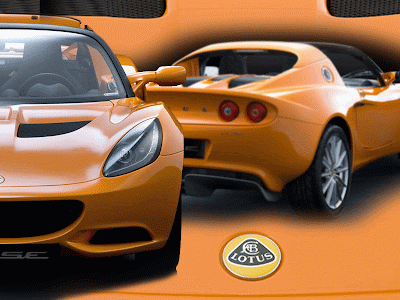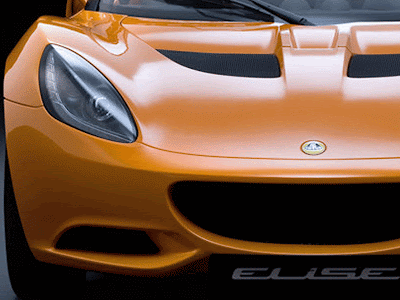British performance sports car manufacturer Lotus has officially unveiled their 2010 Lotus Exige S240. While Lotus fans will recognize this as a very subtle update, the grille and rear wing facelift is a step forward for the mark. The exciting new 2010 Lotus Exige S240enters the United States and Canadian markets in the fall of 2009 with new front styling, a new rear wing and the same rare combination of exceptional performance and high efficiency.
New Lotus Sports Cars Exige S240
The Lotus Exige S240 features a roof integrated air intake scoop feeds air through the air-to-air intercooled and supercharged 1.8 liter Lotus-tuned and Toyota-sourced 2ZZ-GE engine with Intelligent Variable Valve Timing (VVT-i) to provide 240hp at 8,000 rpm and 170 ft.-lbs. of torque at 5,500.
The Lotus Exige S240 features a roof integrated air intake scoop feeds air through the air-to-air intercooled and supercharged 1.8 liter Lotus-tuned and Toyota-sourced 2ZZ-GE engine with Intelligent Variable Valve Timing (VVT-i) to provide 240hp at 8,000 rpm and 170 ft.-lbs. of torque at 5,500.
The 2010 Lotus Exige S240 sprints to 60 mph in a blistering 4.1 seconds and the 100 mph barrier sails by in approximately 10 seconds with top speed is 150 mph. The Lotus Exige S240 is equipped with a 6-speed transaxle synchromesh transmission, traction control and launch control. New for 2010, the optional Track Package will include adjustable Ohlins dampers with threaded spring perches and remote oil reservoirs front and rear.
The Lotus Exige is a renowned high performance coupe that has a well earned reputation as the choice for drivers who demand uncompromised performance, both on the road and on the track. The 2010 Exige S240 introduces a few key enhancements to update the appearance and improve aerodynamic performance. A restyled front end and new larger, low drag rear wing, not only reduces drag, but also gives a more muscular stance enhancing the lightweight shrink-wrapped look of the whole car.
Passing along lessons learned on the track with the Exige GT3 racing program, Lotus Sport Cars has contributed another important technology – variable launch control combined with variable traction control. The launch control allows the driver to determine the number of revs they wish to use during a standing start. Having programmed that limit, the driver then holds their foot down fully on the throttle pedal and sidesteps the clutch pedal for a very quick departure from the line. The clutch damper cushions the severity of the clutch to transmission engagement to minimize the stresses to the drivetrain. The launch control also keeps wheel-spin at bay until 6 mph, after which the traction control assumes its duties.
Like all Lotus cars, the functional components of the car are also beautifully designed as Russell Carr, Chief of Lotus Design, explains, "For 2010 we have taken the already visually extreme Exige and given it even more visual drama. The changes we have integrated to the front and rear of the Exige signal an even clearer and purposeful intent. The functional rear wing is race-inspired, the new angular air intakes and full width splitter give a more hard-edged and aggressive look. Overall, the Exige appears more planted and gives the illusion that both the front and rear of the car are wider than they really are, yet without losing its agile and sleek character."
The new 2010 Lotus Exige S240 is scheduled to launch in the US and Canada in the Fall of 2009. This new 2010 Lotus Exige S240 goes on sale this fall with a starting price of $65,690 and will be available in an upgraded track package with added performance benefits. The 2010 Lotus Exige S240 will hit U.S. and Canadian markets this Autumn.



























